Introduction
In the ever-evolving realm of e-commerce, establishing a successful retail website requires more than just a digital storefront; it necessitates a strategic approach to design, functionality, and user engagement. As online shopping continues to dominate consumer behavior, understanding the essential components of a compelling website becomes critical. This article delves into the key elements of creating an effective retail website, from setting clear objectives and identifying target audiences to choosing the right e-commerce platform and optimizing for user experience.
By exploring these facets, retailers can not only enhance their online presence but also foster customer loyalty and drive sales in an increasingly competitive landscape. Each section provides actionable insights and expert recommendations that empower retailers to navigate the digital marketplace with confidence and precision.
Understanding Your Retail Website Goals
Before starting the creation of your retail platform, it's essential to establish clear objectives. Whether your aims include boosting sales, amplifying brand visibility, or fostering customer interaction, a well-defined set of goals serves as a roadmap for your site’s design and functionality. This clarity ensures that each component of your website is strategically aligned to meet these targets.
In today's digital landscape, an average shopper begins their journey online, meticulously comparing products, prices, and perceived value even before visiting a physical store. As a result, creating an engaging digital experience is imperative. Retailers must go beyond merely focusing on keywords; they should prioritize delivering rich, informative content that addresses inquiries prior to purchasing decisions. This strategic shift is vital in a market characterized by fierce competition and ongoing digital disruption.
To enhance your website's visibility in search engine rankings, consider implementing structured data schemas, offering compelling product descriptions, and optimizing local listing pages. These tactics not only enhance search performance but also enrich the user interaction, allowing potential clients to find relevant information swiftly and easily.
As noted by industry experts, designing with your target audience in mind is crucial. This entails using design elements that resonate with your demographic, thereby making your online space inviting and engaging. By concentrating on a smooth, user-friendly experience, you can effectively lead visitors through the purchasing process, ultimately resulting in higher conversion rates and loyalty.
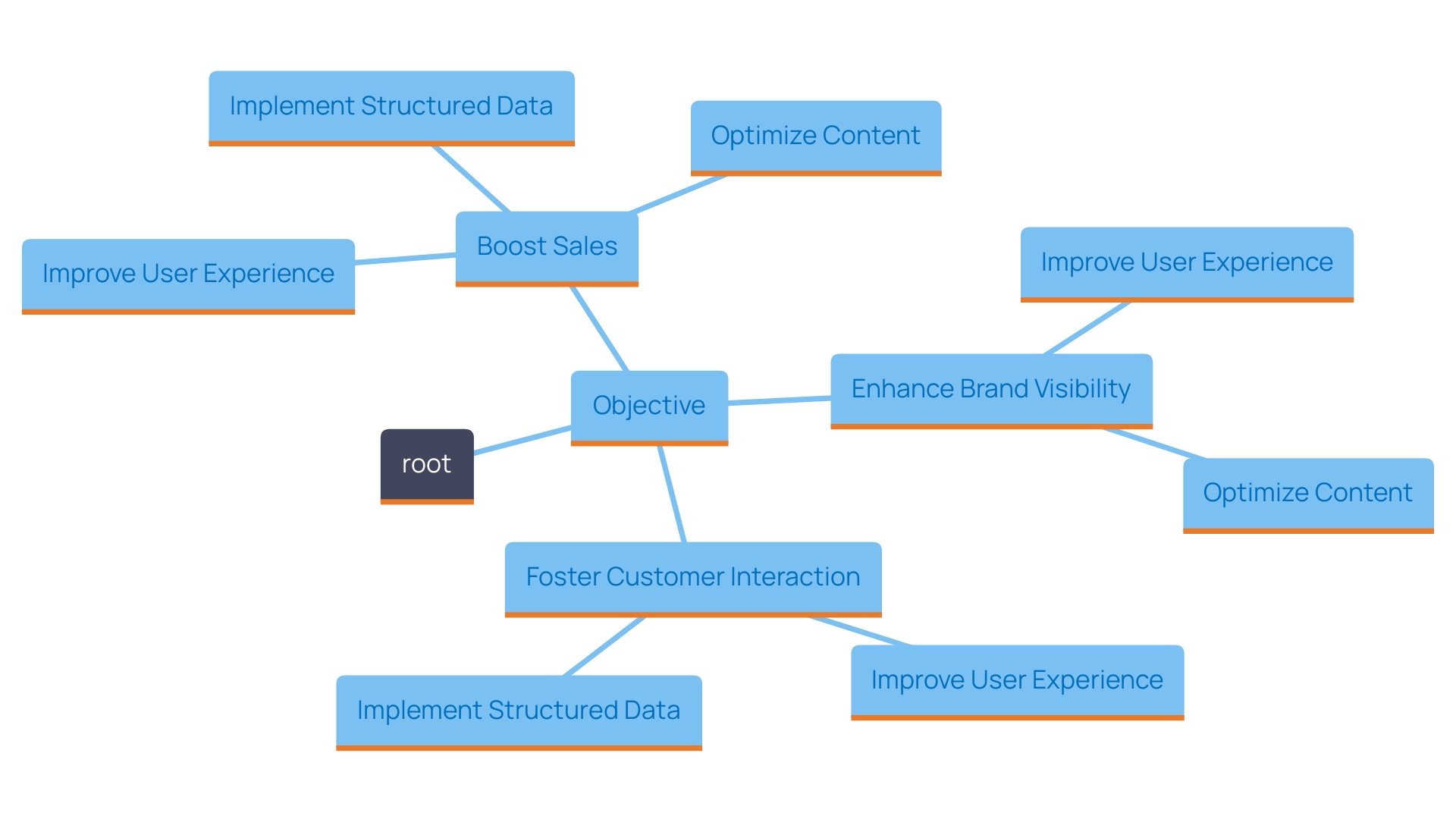
Defining Your Target Audience
Recognizing your target audience is a fundamental aspect of impactful design that can greatly influence your sales performance. Conducting thorough market research is vital to uncovering your ideal customers' demographics, preferences, and shopping behaviors. This research not only informs the aesthetic aspects of your website but also shapes the content and marketing strategies that connect with visitors.
Market research combines rigorous data collection methods, such as surveys and focus groups, with insightful data interpretation to identify patterns and forecast trends. However, many businesses overlook the ongoing value of this data once the initial insights are delivered. To maximize the potential of your research, it’s essential to revisit and reanalyze the findings regularly, transforming insights into actionable strategies.
For instance, Nets, a digital payment solutions provider, emphasizes the importance of presenting technical data in an engaging manner to motivate individuals to explore information independently. This approach highlights how effective design can facilitate user interaction and enhance the overall client experience.
Additionally, industries like retail, which often have repeat buyers, are leveraging data-driven insights to innovate their offerings. As reported, over 2.71 billion people are shopping online worldwide, resulting in e-retail sales projected to exceed $5.7 trillion globally. This rapid shift underscores the necessity for businesses to adapt their web presence to meet evolving consumer expectations. Grasping your audience’s preferences through market research allows you to develop an online platform that not only draws in but also keeps customers, fostering long-term success.
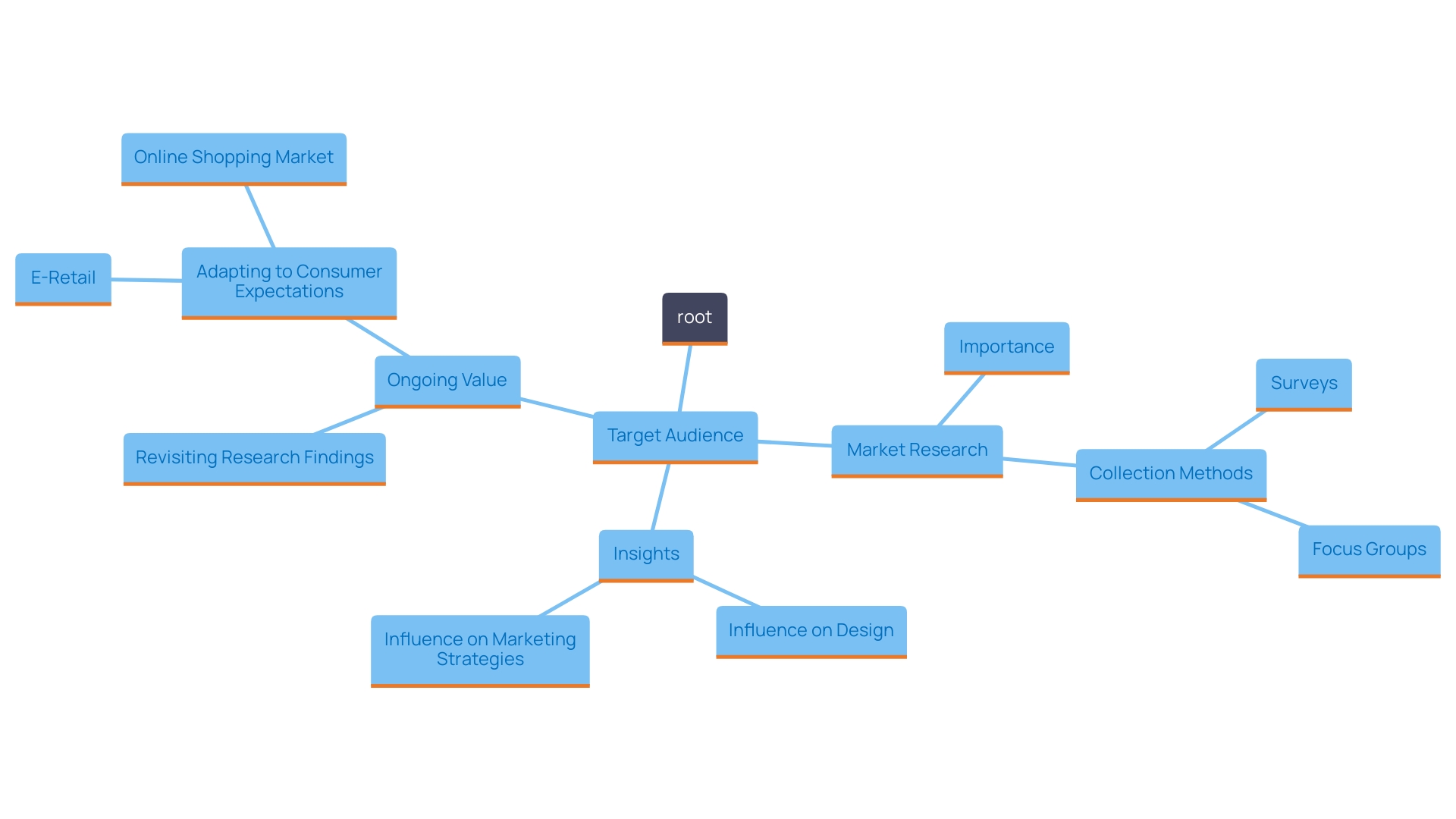
Choosing an E-commerce Platform
Choosing the right e-commerce platform is crucial for the success of your retail online presence. Key considerations include ease of use, scalability, payment processing options, and the features available. For instance, Shopify is renowned for its user-friendly interface and robust scalability, making it a favored choice among businesses globally. Since its inception, Shopify has facilitated over half a trillion dollars in global commerce, driving revenue for millions of merchants across more than 175 countries. Its speed and flexibility cater to both small-scale retailers and large enterprises, establishing it as a leader in the digital commerce space.
On the other hand, platforms like Square, while beneficial for businesses already using their POS systems, may present challenges with usability. Users often report that the dashboard feels disjointed, complicating the management of products across different sales channels. This lack of cohesion can hinder user satisfaction, particularly for those who require a seamless integration between their website and inventory management.
When exploring options, it's essential to assess the technical expertise available within your team. A SWOT analysis can help you identify the strengths, weaknesses, opportunities, and threats associated with your current tech stack, guiding you toward a platform that aligns with your operational capabilities and business objectives.
As e-commerce continues to evolve, with online purchases projected to account for 20.1% of retail sales in 2024, choosing the right platform becomes increasingly critical. The scenery is changing swiftly, impacted by trends like artificial intelligence and machine learning, which are redefining user interactions. Platforms that adopt these innovations will likely provide improved personalization and efficiency, further boosting sales and client satisfaction.
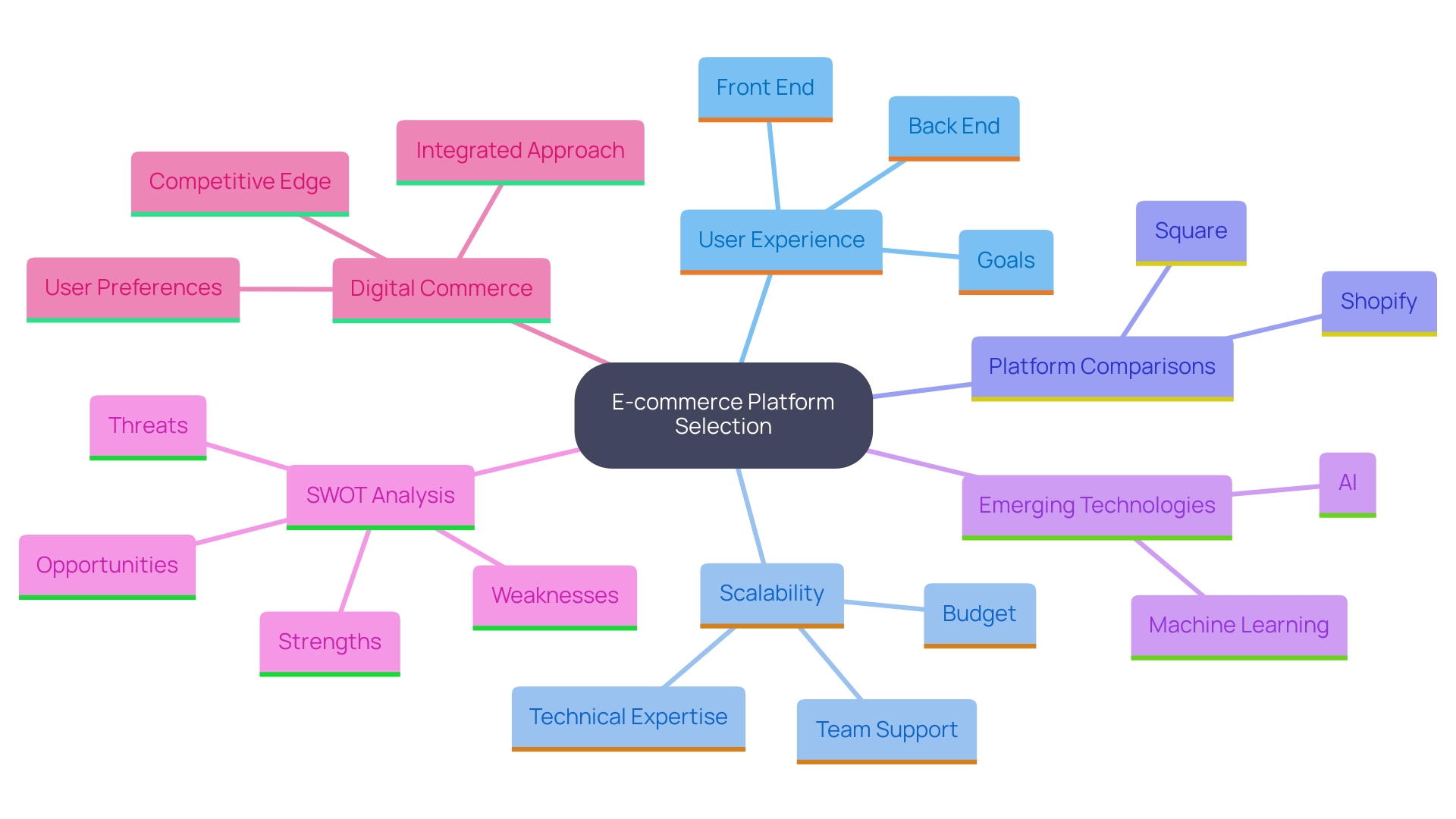
Designing Your Website Structure
A well-structured website plays a crucial role in enhancing both visitor experience and search engine optimization (SEO). By meticulously planning the main categories and subcategories for your products, you create an intuitive navigation system that allows customers to find what they need swiftly. Clear, descriptive labels for these categories are essential; they not only direct visitors but also help search engines understand the content of your site.
Ensuring that all essential pages are easily accessible from the homepage is another key component of effective information architecture. This approach significantly improves overall site usability and encourages longer browsing sessions. Studies show that more than half of individuals will not think about buying from a brand with a badly designed mobile site, highlighting the necessity for a smooth interaction across all devices.
Mobile optimization is particularly important; sites that load in two seconds or less see a 15% higher conversion rate than those that take longer. Approximately half of all internet traffic now comes from mobile devices, making it imperative that your platform’s structure supports quick and easy navigation on smaller screens. A user-friendly site not only retains visitors but also encourages them to share their positive experiences; 79% of users are more likely to revisit and recommend a mobile site that is easy to use.
Investing in a coherent structure and optimizing for mobile can bring significant returns. As observed in current patterns, 43% of small enterprises intend to improve their online performance in 2023, indicating the acknowledgment that a well-structured platform is essential for digital success.
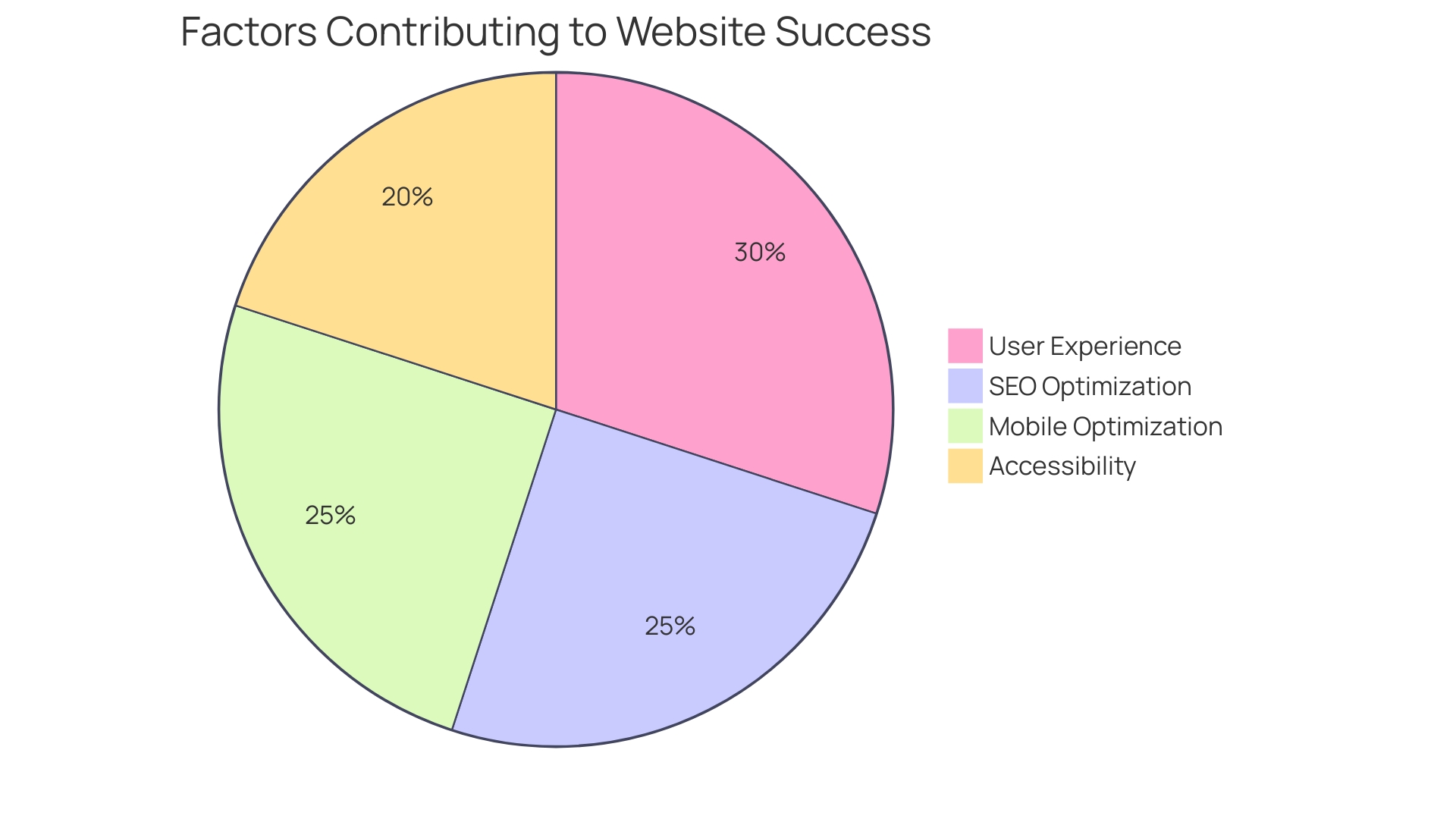
Creating a Sitemap
A sitemap serves as a crucial blueprint for your online presence, visually mapping out its structure. This graphical representation not only outlines the hierarchy of pages but also aids in navigation for both individuals and search engines. A well-constructed sitemap allows you to establish a clear path through your content, ensuring that every main and subpage is accounted for, much like the foundational elements of a building.
Visual sitemaps are generally depicted as hierarchical diagrams, showcasing the relationships between various sections of your site. This clarity is essential; as one expert noted, "Website architecture serves as the blueprint for your building. It meticulously maps and organizes the elements and components to create a cohesive, user-friendly, and efficient online platform
The importance of a detailed sitemap extends beyond mere organization. It plays a vital role in optimizing your site for search engines, making it easier to crawl and index your content. In today’s digital environment, where more than 50% of individuals won’t interact with a poorly designed mobile site, having a clear sitemap can greatly improve navigation.
Moreover, as part of your web development process, a sitemap aids in establishing a logical content hierarchy. This involves defining the purpose of your site—be it for sales, brand awareness, or informational purposes—which ultimately shapes how you structure your pages.
In summary, the creation of a detailed visual sitemap is not merely a design job; it is a crucial approach that affects how efficiently visitors and search engines engage with your online platform.
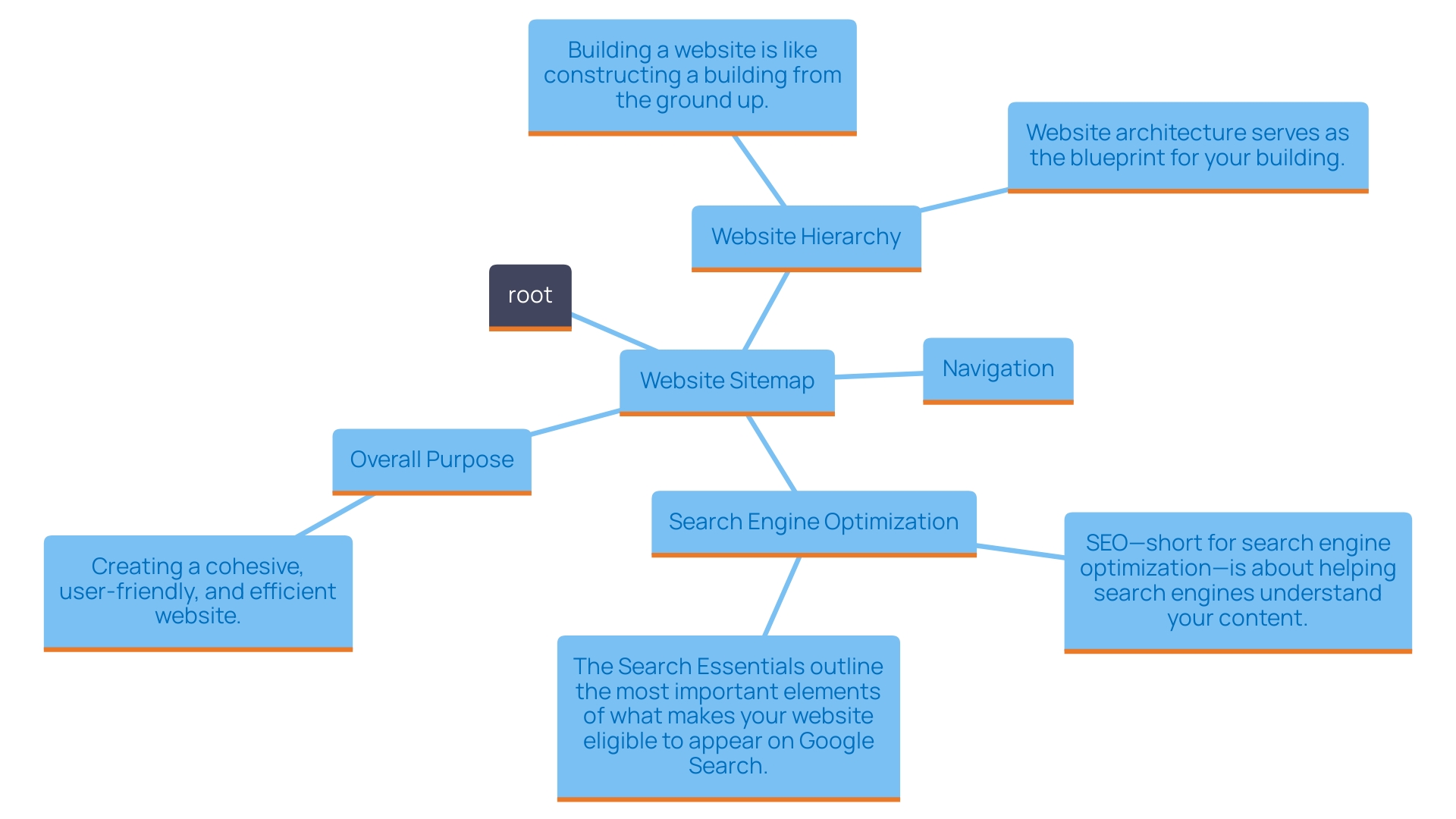
Designing Your Website Layout
Developing an appealing and practical website design is essential for improving visitor experience and aligning with your brand identity. Employ top-notch visuals that connect with your audience while ensuring clear prompts that lead individuals smoothly through their shopping experience. A mobile-friendly design is no longer optional; over 50% of users will not consider purchasing from a brand with a poorly designed mobile site. This statistic underscores the necessity of responsive design, which adapts effectively to various screen sizes and devices.
Product pages should be visually appealing, incorporating concise product descriptions, competitive pricing, and authentic customer reviews to instill confidence in potential buyers. This approach not only enhances visual engagement but also addresses the instinctive need for reassurance that many online shoppers experience.
Recent trends indicate that mobile sites loading in two seconds or less can achieve a 15% higher conversion rate than slower counterparts. Therefore, enhancing your online presence for speed is paramount. A user-centric design that prioritizes performance over aesthetics can significantly influence retention and conversion rates. In fact, 79% of individuals are more likely to revisit and share a mobile site if it is easy to navigate.
Moreover, the implementation of a cohesive branding approach throughout all aspects of your online presence not only conveys your business vision but also boosts trust and loyalty among visitors. As highlighted by industry professionals, the design should be a combination of science and psychology, guaranteeing that every visual component adds to a unified interaction.
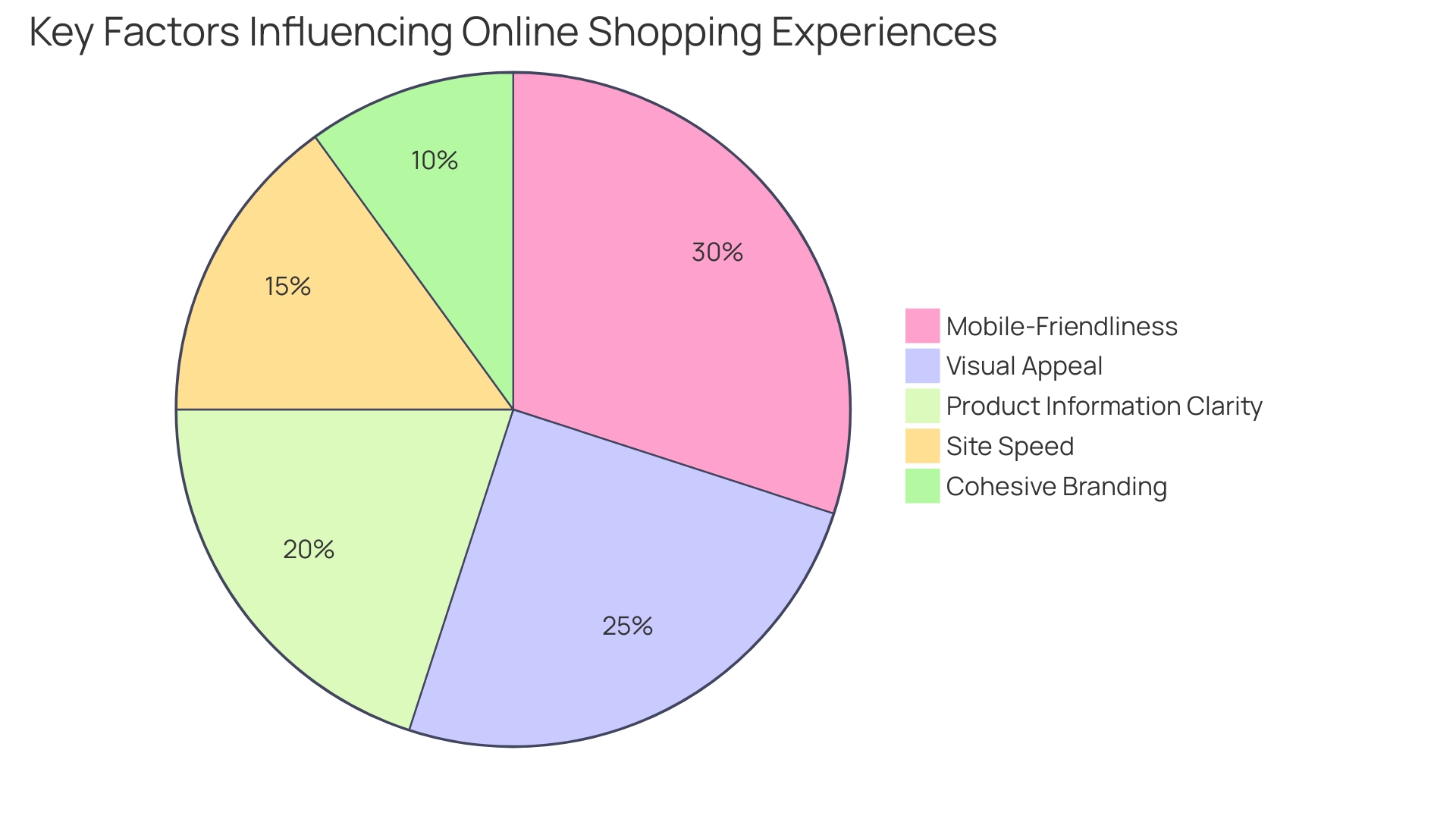
Setting Up Essential Pages
Key pages are crucial for any retail website, acting as the backbone of navigation and overall shopping experience. Important components include the homepage, product pages, about us, contact, FAQ, and policy pages covering shipping, returns, and privacy. Each page must deliver clear and concise information that guides users smoothly through their shopping journey.
The homepage acts as the first impression, showcasing featured products and promotional offers that captivate visitors. Product pages should not only showcase high-quality images but also offer detailed descriptions, pricing information, and reviews from buyers, fostering trust and encouraging conversions. As eCommerce sales in the U.S. have reached a staggering $579 billion in the first half of 2024, optimizing these pages is crucial for capturing market share and boosting client engagement.
'The 'About Us' page provides insight into the brand's values and mission, further enhancing consumer trust, while the contact page should present multiple avenues for support, including email, phone, and live chat.'. A useful FAQ section responds to typical customer questions, minimizing friction and improving the shopping process.
Lastly, policy pages are essential in creating clarity about shipping and returns, with 74% of individuals more inclined to revisit a mobile-friendly site, highlighting the significance of accessible information. As users increasingly demand efficient and user-friendly experiences, ensuring that these key pages are well-designed and informative will significantly contribute to the overall effectiveness of the retail website.
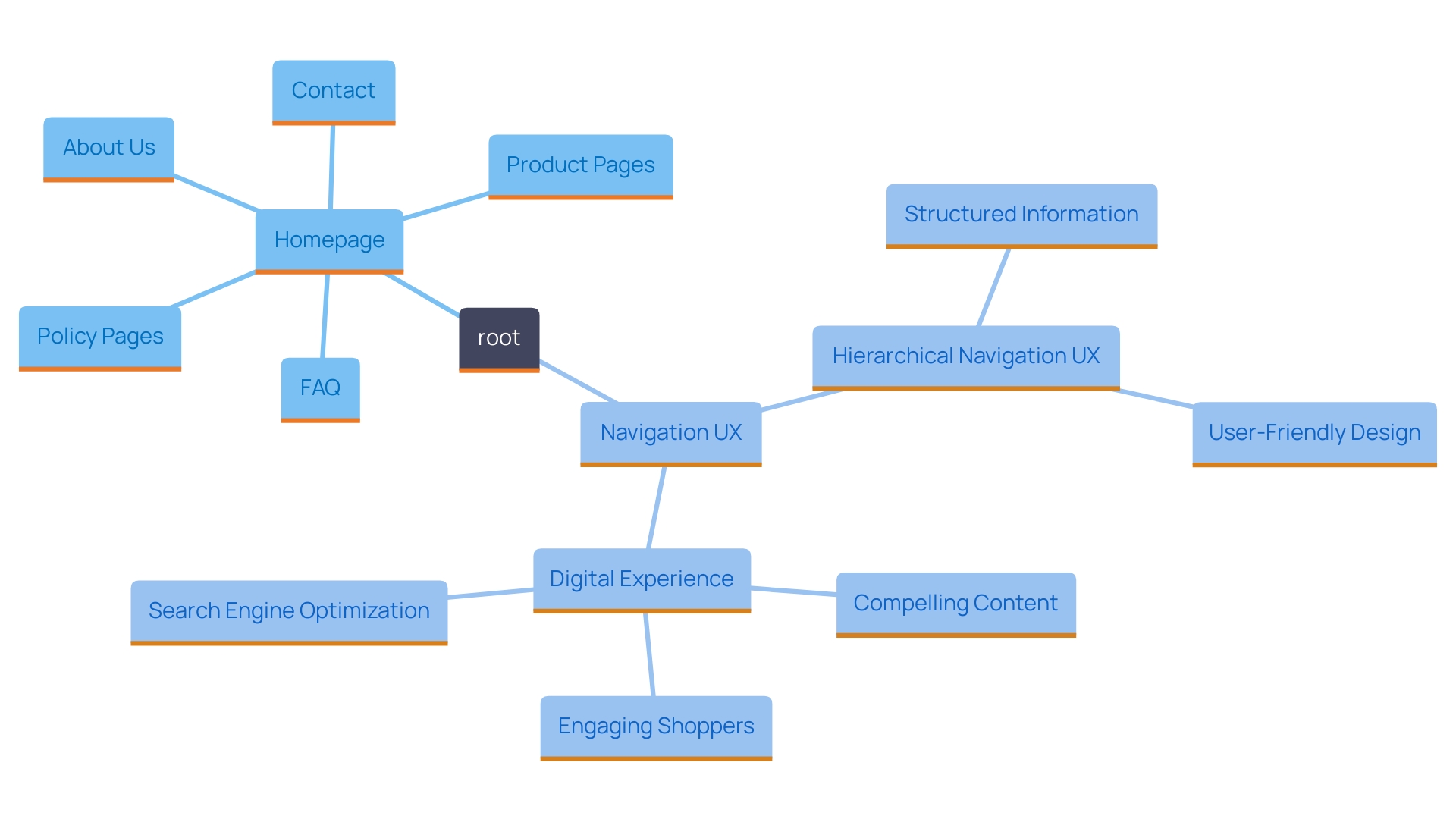
Configuring Shipping and Delivery Options
Choosing the appropriate shipping approach is vital for improving client satisfaction and boosting sales in e-commerce. Businesses must weigh options such as free shipping, flat-rate shipping, or calculated shipping costs, each with its own implications on profitability and client retention. Free shipping, for instance, is a powerful incentive that can significantly reduce cart abandonment rates. A study found that 70% of consumers abandon their carts due to unexpected shipping costs, underscoring the value of transparent pricing.
Incorporating shipping choices smoothly into the checkout procedure improves the overall experience for buyers. Shoppers should easily navigate their choices, allowing them to select preferred shipping methods without hassle. Moreover, clearly communicating delivery times and costs is essential to avoid dissatisfaction among clients. According to recent insights, 52% of e-commerce orders in the U.S. were concentrated in just nine states, indicating a need for businesses to tailor their shipping strategies to regional preferences and demands.
Furthermore, leveraging technology to track shipments can build trust and provide reassurance to clients. An expert noted, "The instinctive desire to seek reassurance can be true even if you've already seen an 'action complete' status at the end of the booking form." By providing real-time updates, businesses can alleviate client anxiety about order fulfillment and delivery, fostering loyalty.
Incorporating these strategies not only aligns with consumer preferences but also positions brands to compete effectively in a rapidly evolving e-commerce landscape. As companies adjust, they should take into account the significance of visibility in shipping choices to drive conversions and improve the user experience.
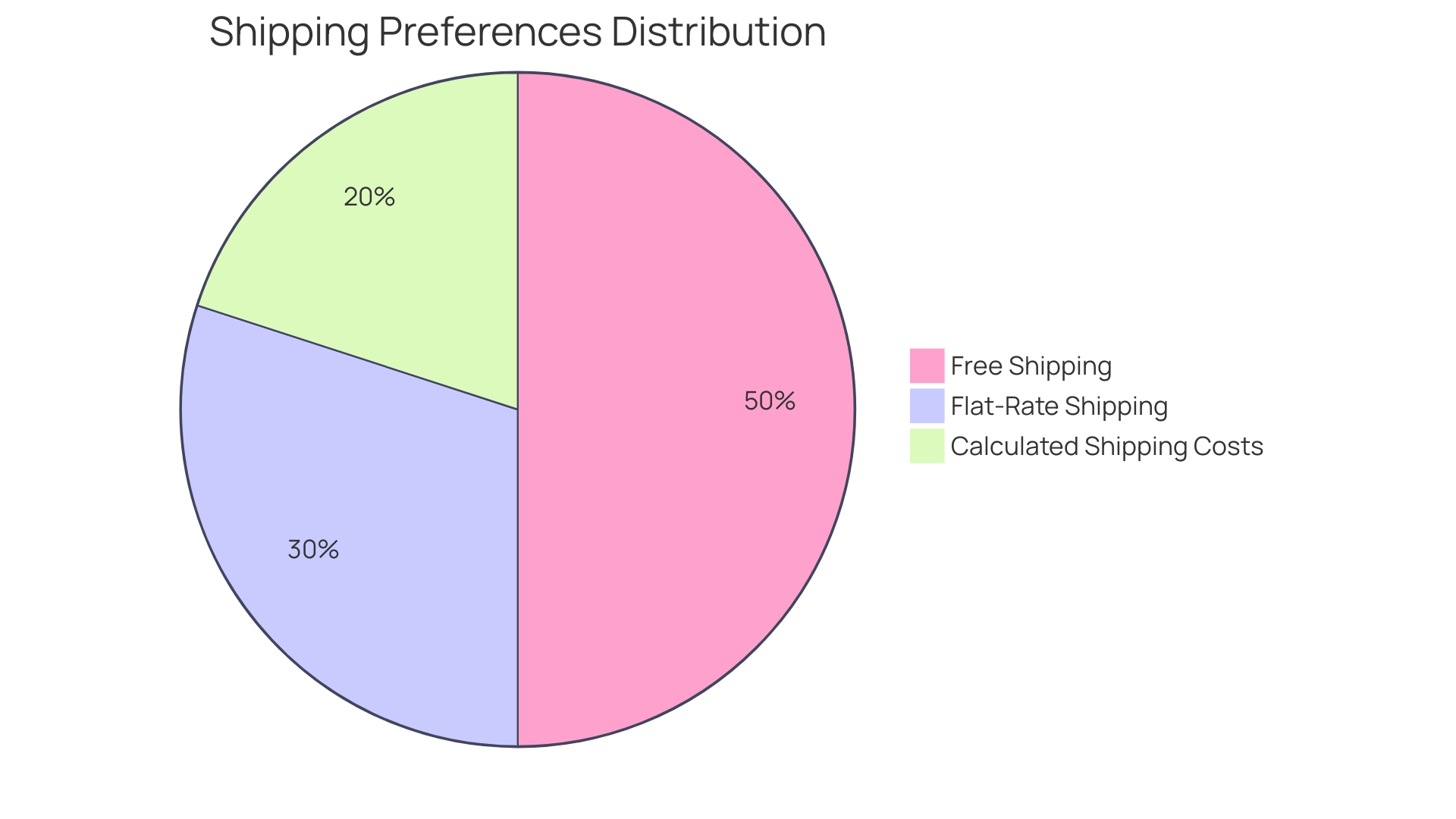
Setting Up Payment Processing
Choosing a reliable payment gateway is crucial for optimizing your e-commerce website and improving client satisfaction. A well-chosen payment gateway should accommodate a variety of payment methods, including credit cards, PayPal, and digital wallets. This flexibility meets the diverse preferences of your clientele and can significantly reduce cart abandonment rates, a common challenge faced by online retailers.
Comprehending your clients is the first step in this process. Identify who your typical shoppers are, their demographics, and their purchasing habits. This understanding will allow you to customize your payment alternatives to align with client expectations, ultimately enhancing their buying journey.
Security is another critical component. A secure payment processing system safeguards sensitive client information, fostering trust and encouraging repeat purchases. According to the Federal Reserve, the number of noncash payments in the U.S. has surged by over 500% between 2000 and 2021, highlighting the increasing reliance on secure digital transactions.
Moreover, the payment experience is often a pivotal factor in checkout abandonment. As indicated in industry insights, buyers may add items to their cart but abandon the purchase if the payment process is cumbersome or insecure. In fact, companies that streamline their checkout process can see considerable improvements in conversion rates. For instance, the 2022 consumer payment behavior data reveals that credit card use remains a dominant choice, as consumers increasingly favor faster and more convenient payment methods.
Stay informed about emerging trends in payment technology, as these can significantly influence your e-commerce strategy. For example, digital payments in Southeast Asia are projected to reach $1.5 trillion by 2025, driven by the rapid growth of e-commerce and smartphone penetration. This trend highlights the necessity for businesses to adjust to changing client preferences and technological advancements.
By aligning your payment gateway with your business needs and customer expectations, you can create a seamless and enjoyable shopping journey that not only meets but exceeds consumer demands.
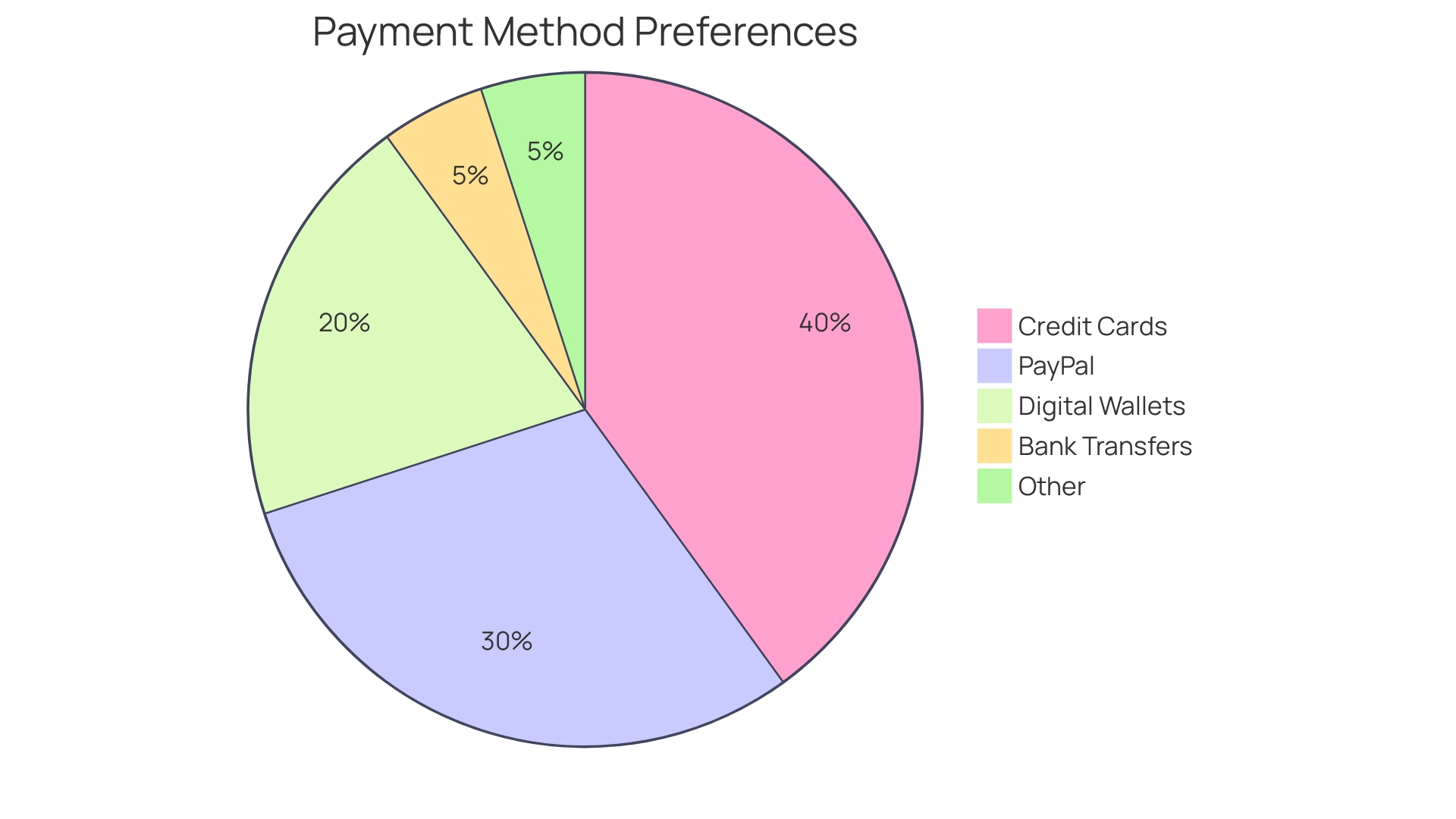
Optimizing for User Experience
To create an engaging online shopping experience, prioritize the experience of visitors through three key elements: site speed, mobile responsiveness, and streamlined navigation. Research indicates that over 50% of individuals will not consider purchasing from a brand with a poorly designed mobile site. Therefore, ensuring your site loads swiftly—ideally within two seconds—can lead to a 15% higher conversion rate compared to average mobile sites.
Mobile devices account for nearly half of all website traffic, making it imperative to focus on mobile optimization. A lack of mobile-friendly design can frustrate individuals, with 48% expressing annoyance and 61% likely to abandon a site if they can't find what they need swiftly. By simplifying navigation, you not only enhance usability but also encourage repeat visits; 79% of individuals are more likely to return and share a mobile-friendly site.
Employing analytics tools to examine individual behavior is essential in this process. Modifications informed by customer input can result in a more seamless shopping process. For instance, Vendredi Society transformed their website by building a cohesive narrative around their brand, ensuring every design element conveyed their culture. This method highlights the significance of a carefully planned interaction, which can be a fundamental element of your e-commerce strategy. By aligning technical performance with client expectations, you can foster customer loyalty and drive sales.
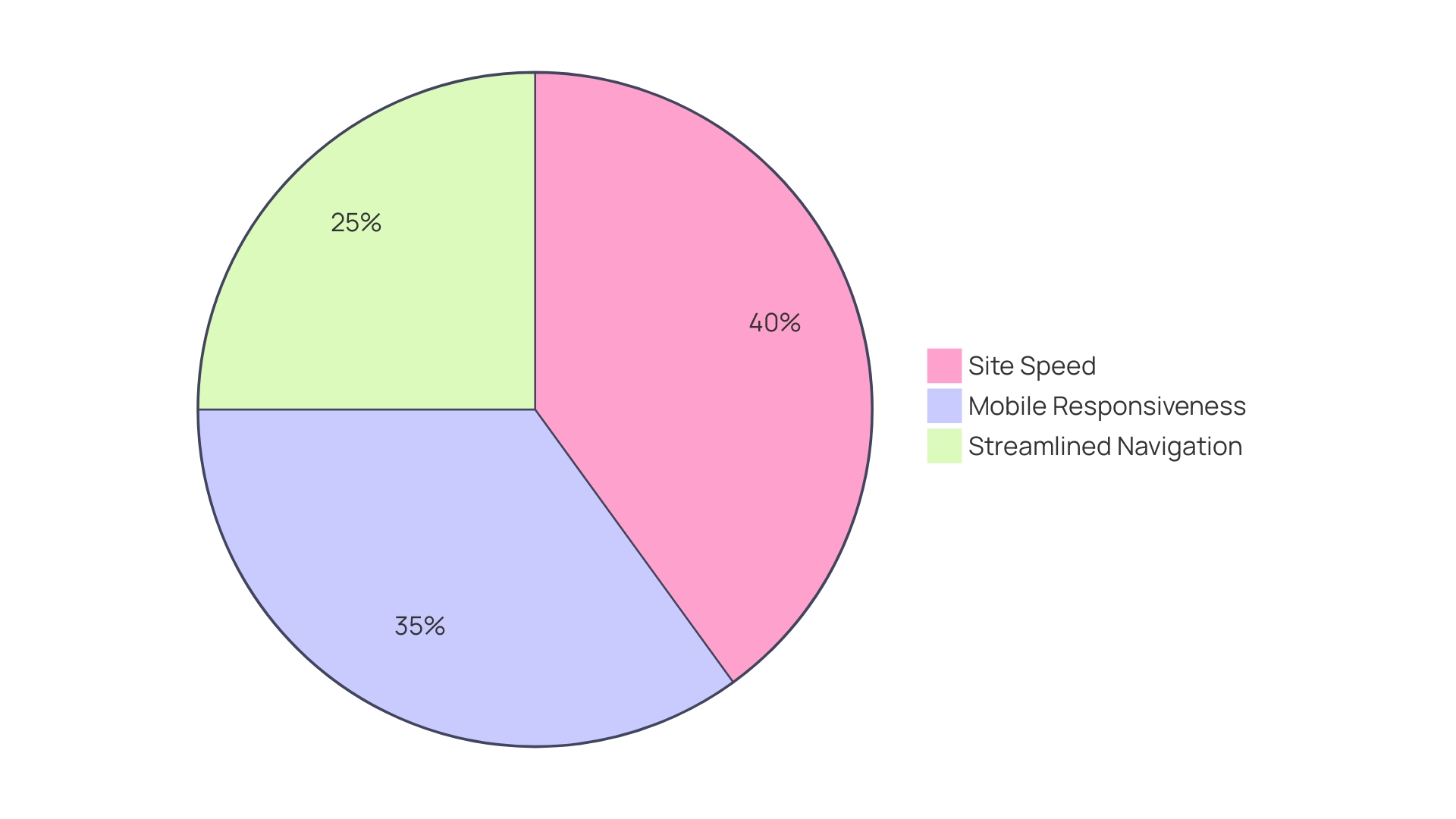
Testing and Launching Your Website
Comprehensive evaluation is crucial prior to launching a retail platform, as even small glitches can result in an irritating experience for visitors, prompting them to exit your site right away. To ensure a seamless launch, it's crucial to conduct comprehensive testing across various devices and browsers. This involves checking every link, form, and payment process meticulously to identify and fix any issues that may arise.
Setting clear objectives for quality assurance is vital. For instance, over 50% of individuals are unlikely to consider purchasing from a brand if they encounter a poorly designed mobile site. Hence, optimizing for mobile responsiveness should be a priority. In fact, mobile sites that load in two seconds or less can achieve a 15% higher conversion rate than their slower counterparts. This highlights the importance of speed and functionality over aesthetic appeal.
Once testing is complete, it's time to develop a robust launch plan. This should include strategies to promote your website effectively and attract initial traffic. Grasping your target audience and their purchasing behaviors is essential, as 74% of individuals are more inclined to revisit mobile-friendly websites. By leveraging data-driven insights, you can create impactful marketing campaigns that resonate with potential customers.
Integrating these strategies not only boosts audience involvement but also establishes your online platform for ongoing development in a progressively competitive e-commerce environment.
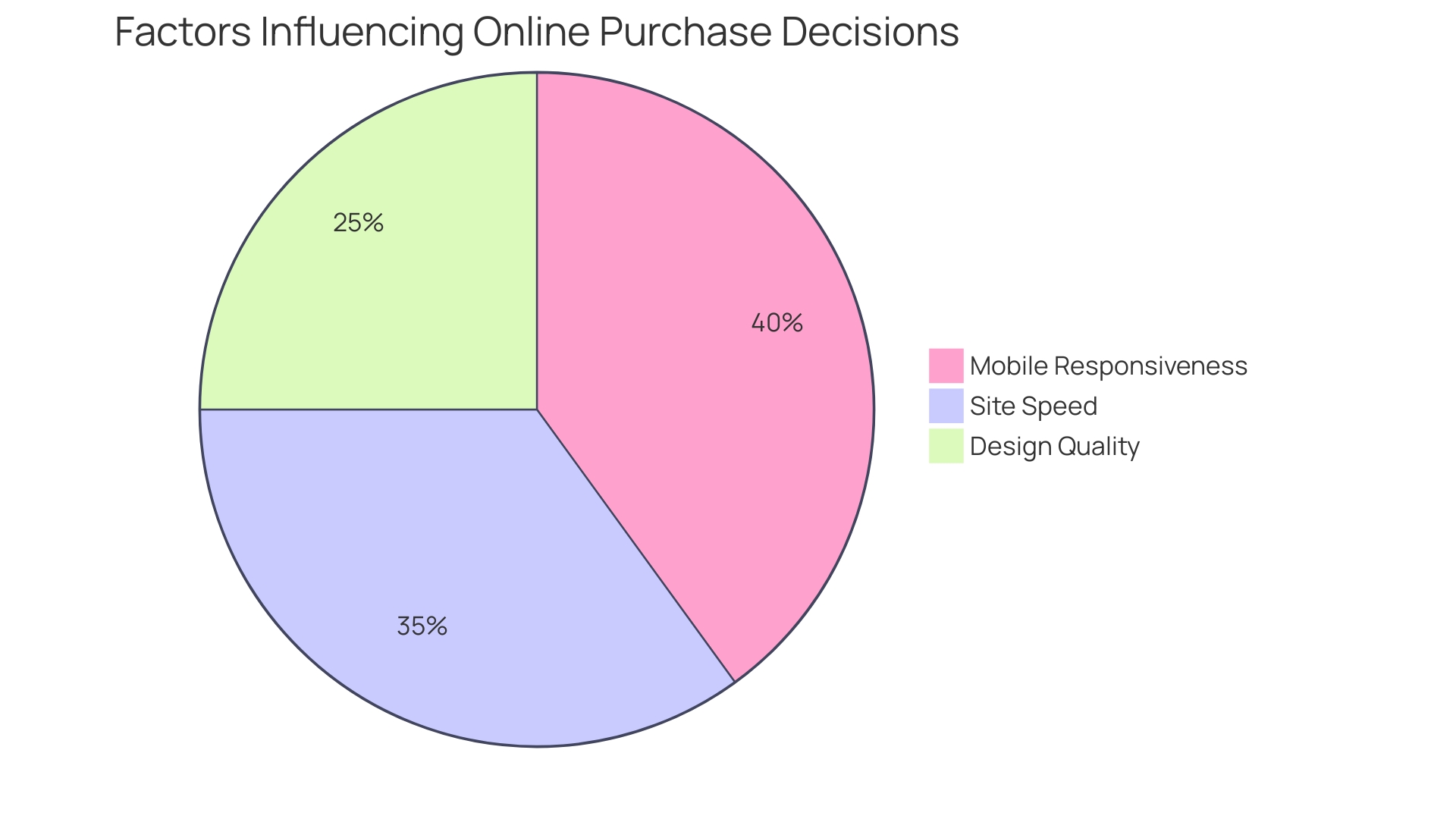
Maintaining and Updating Your Website
After the launch, it's crucial to uphold a proactive strategy regarding your platform's performance and audience engagement. This involves a continuous cycle of monitoring analytics and gathering feedback from individuals, which can provide invaluable insights into your audience's behavior and preferences. Maintaining your content updated and pertinent is vital; based on recent studies, 43% of small enterprises intend to invest in their online performance in 2023, emphasizing the increasing acknowledgment of a robust digital presence.
Regularly updating your content not only enhances user experience but also contributes positively to your SEO efforts. Quality content is the backbone of any successful online platform, as it not only engages visitors but also drives conversions. Ensure that your website is optimized for both traditional search engines and emerging AI-driven search technologies, as the digital landscape is rapidly evolving. The recent acquisition of MarketMuse by Siteimprove underscores the importance of connecting content creation with strategic planning to minimize waste and maximize impact.
Moreover, keeping all software up to date is vital for maintaining security and performance. Ignoring updates can result in vulnerabilities and operational problems, which can negatively impact trust and engagement from individuals. As James Kelty, Head of Infrastructure at Chess.com, emphasizes, a stable IT infrastructure is crucial for delivering consistent joy to users, which translates into higher engagement and retention. By implementing changes based on analytical insights, you can ensure that your website remains a dynamic platform that meets the ever-changing needs of your audience.
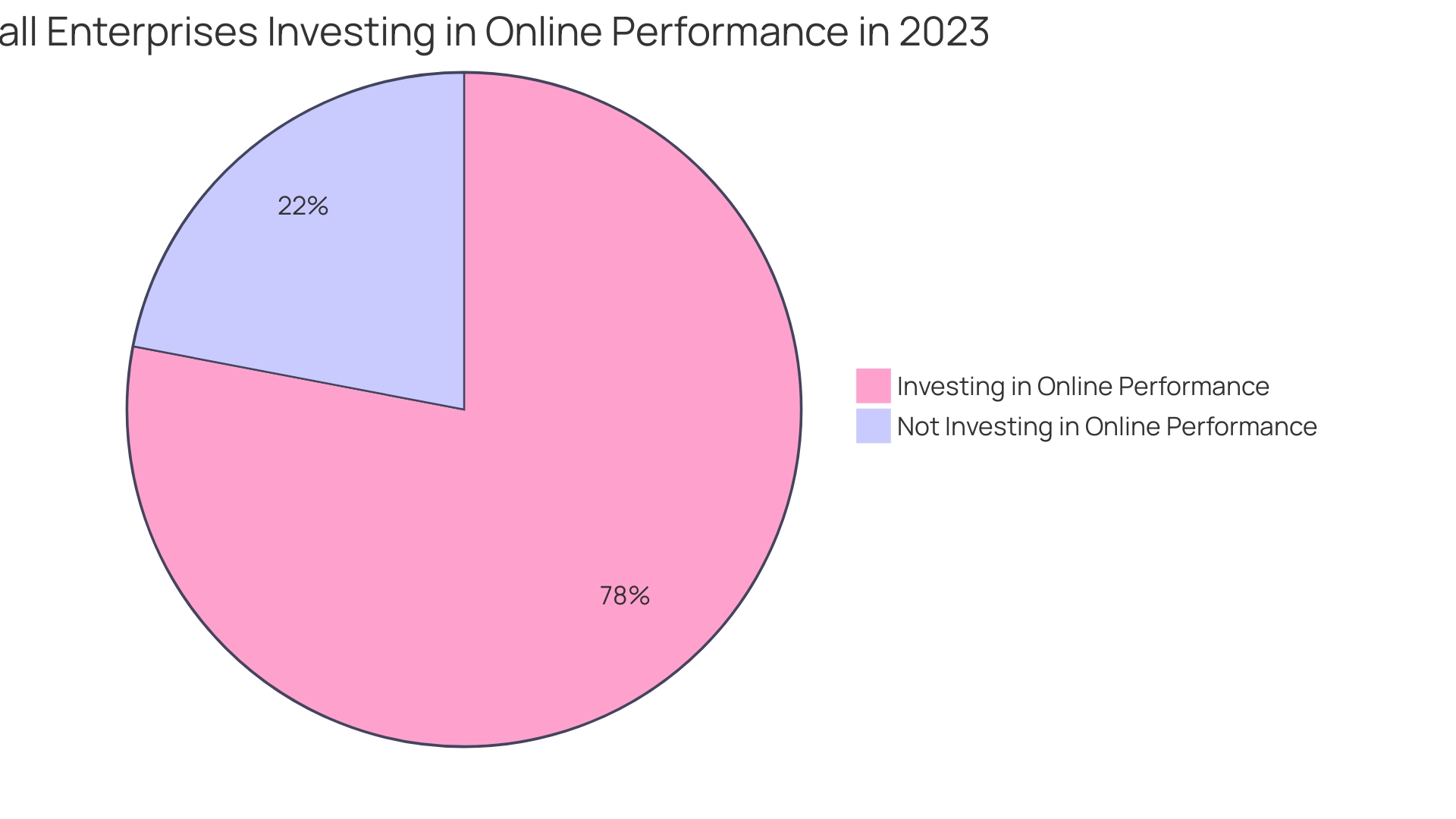
Conclusion
Establishing a successful retail website is a multifaceted endeavor that requires careful consideration of various elements. Clear objectives serve as the foundation for all design and functionality decisions, ensuring that each component aligns with overarching business goals. Understanding the target audience through thorough market research is essential to create a site that resonates with users, enhancing both engagement and conversion rates.
Choosing the right e-commerce platform is critical, as it impacts ease of use, scalability, and payment processing options. A well-structured website enhances user experience and search engine optimization, while a detailed sitemap facilitates navigation for both users and search engines. Equally important is the design of the website layout, which should be visually appealing and mobile-friendly to cater to the growing number of mobile shoppers.
Key pages such as product listings, about us, and policy pages must be informative and accessible to guide users smoothly through their shopping journey. Shipping and payment processing strategies play a significant role in customer satisfaction; transparent options can reduce cart abandonment and foster loyalty. Optimizing the overall user experience through site speed, mobile responsiveness, and streamlined navigation is vital in retaining customers and driving sales.
Finally, thorough testing and ongoing maintenance are crucial to ensure the website remains functional and engaging. By continuously monitoring analytics and updating content, retailers can adapt to changing consumer preferences and technological advancements. In an increasingly competitive landscape, a proactive approach to website management is essential for sustained growth and success in the e-commerce space.





